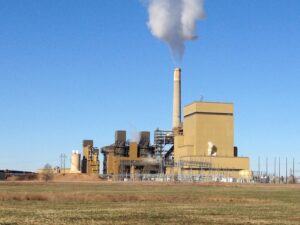Amid the deluge of reactions to President Obama’s June 25 speech announcing wide-ranging executive actions to curb carbon emissions and prepare for climate change effects were some unexpected statements.
An assortment of lawmakers from Washington and the states, and a number of industry and environmental groups, lauded or protested the Climate Action Plan (CAP), citing specific reasons. Here’s a summary of what some said.
Lawmakers on the Executive Actions
Sen. Lisa Murkowski (R-Alaska) , ranking member of the Senate Energy and Natural Resources Committee, criticized the central feature of the president’s climate agenda—”command-and-control” regulations—which she said would drive up energy costs. Murkowski noted that greenhouse gas (GHG) emissions had plunged thanks to low natural gas prices (and the resulting increased use of gas instead of coal), improved vehicle efficiency, and economic stagnation.
“Addressing climate change will require continued American innovation, but the president does not have the power to will technologies into existence through sheer force or scope of regulation. That will require a longer-term commitment to basic, scientific research that enables genuine breakthroughs. Instead, the president is again putting us on a path where government dictates circumvent elected representatives in Congress,” she said.
House Speaker John Boehner (R-Ohio) said in a tweet: “Obama administration says we need a ‘war’ on American energy: GOP thinks energy is the gateway to prosperity.”
As was expected, the 51 Democratic members of the U.S. House that make up the House Sustainable Energy and Environment Coalition (SEEC) said addressing the effects of climate change is a “moral and fiscal imperative.” The coalition further applauded the executive actions by the president, saying, “While far too many in Congress question settled science, climate change will not yield to partisan gridlock.”
Democratic Senator Joe Manchin from coal-rich West Virginia, on the other hand, slammed the president’s plan with strong language, saying it imposes “unreasonable restrictions that will have disastrous consequences for not only the coal industry.” Manchin said the president’s proposed rules on coal “are not feasible” or “reasonable,” pointing to Energy Department reports that the U.S. is slated to obtain 37% of its energy from coal until 2040. He said, “It’s clear now that the President has declared a war on coal. It’s simply unacceptable that one of the key elements of his climate change proposal places regulations on coal that are completely impossible to meet with existing technology.
States on the Directive to the EPA
Pennsylvania Governor Tom Corbett (R) opposed some facets of the plan, pointing out that U.S. GHG emissions have been trimmed to 1994 levels, and saying that was an “incredible accomplishment brought about by the free market.” Corbett and six other governors—including Steven Beshear (D-Ky.), Bob McDonnell (R-Va.), Jack Dalrymple (R-N.D.), Earl Ray Tomblin (D-W.Va.), Mike Pence (R-Ind.), and Phil Bryant (R-Miss.) earlier this week in a letter urged the president to consider “an alternative” approach to address GHG emissions that would not harm their states’ economies.
The Wide Gamut from Industry Groups
The Edison Electric Institute (EEI), whose membership of shareholder-owned electric companies represent about 70% of the U.S. power industry, said it will want to ensure that any new policies or regulations to curb carbon emissions from existing power plants “contain achievable compliance limits and deadlines, minimize costs to customers, and are consistent with the industry’s ongoing investments to transition to a cleaner generating fleet and enhanced electric grid.” EEI President Tom Kuhn also said it is critical that fuel diversity and support for clean energy technologies be maintained, “not hindered.”
Kuhn stressed that the nation’s power companies back the goals of U.S. environmental laws and have long led other sectors in reducing criteria pollutants and GHG emissions over the past two decades. But the sector today is “faced with a range of critical environmental policy and regulatory issues that are impacting company strategic planning and decision making. The electric generation fleet also is in the midst of a major transformation to a significantly cleaner fleet as a result of several factors. These include the closing of older coal plants; the confluence of the Mercury and Air Toxics Standards (MATS) and other environmental regulations; companies taking advantage of abundant supplies of low-cost, domestically produced natural gas to generate more electricity; greater efficiency in electricity use; slower economic growth; the building of new nuclear power plants and increasing the capacity of existing ones; and increased deployment of renewable generation,” he said. The EEI would work with the administration to further develop the CAP and hopes to play a role to “forge workable regulations.”
The American Public Power Association (APPA), an organization of more than 2,000 community and state-owned not-for-profit utilities, said it supports “several aspects” of the CAP, including plans to increase energy-efficiency efforts, streamline hydropower and other renewable resource development, and increase our use of nuclear power. But it said it has significant concerns with the proposals, including impacts from the directive to the EPA to expedite its new plant GHG rules. “APPA is encouraged that the President has directed EPA to re-propose last year’s flawed proposed rule for new power plants that effectively banned new coal-fired plants,” the group said, but it strongly urged the EPA to make substantial changes to the rule, including provisions that differentiate between fuel types and set a standard for coal that can be achieved using current commercially available technology.
The APPA said it was even more concerned about how the EPA would address emissions from existing power plants, noting that under the Clean Air Act, the agency can set broad national guidelines and not numeric emissions requirements or limits. “Since there is no commercially available technology to control GHG emissions from power plants, state programs will likely and appropriately vary depending on a number of factors.”
Another concern is how the president’s proposal would keep electricity affordable. “With respect to increased use of renewable energy sources—a goal strongly supported by APPA and its members—it is not clear that the President’s proposal includes a recognition that the predominant renewables, wind and solar, must be backed up on a one-for-one basis by another source of electricity, usually natural gas. This requirement substantially increases the overall costs,” it said.
The National Rural Electric Cooperative Association (NRECA), which represents more than 900 private not-for-profit, consumer-owned electric cooperatives in 47 states, expressed alarm at the president’s CAP, which it called a “regressive new climate tax” that would raise electric utility bills for millions of Americans. “America’s rural communities depend on coal-fired generation for affordable electric power and would be disproportionately penalized by this scheme. Folks in rural communities and those with low or fixed incomes already spend more of their household budget on energy; this proposal would increase their burden.” NRECA said it would “fight this proposal” at the agency level and in the courts if necessary.
Coal group the American Coalition for Clean Coal Electricity (ACCCE) said the president’s plan will be “a legacy of higher energy costs, lost jobs, and a shattered economy.” The group went so far as to say that the administration failed to recognize the environmental progress the industry has made. “Recent EPA regulations have already taken a harsh toll on coal-fueled electricity. So far this year, EPA regulations have played a major role in the announced closure of 288 coal plants in 32 states. This is equivalent to shutting down the entire electricity supply of the state of New York. Further regulation could force even more plant closures,” said ACCCE CEO Mike Duncan.
The American Gas Association (AGA) lauded the CAP, claiming natural gas complements renewables and energy efficiency. The natural gas industry has embarked on a number of investments to modernize the gas delivery infrastructure, including replacing miles of cast iron and unprotected steel pipe with modern plastic pipe, actions that have reduced methane emissions by 16% since 1990. However, the AGA said that the president can further advance U.S. climate goals by “supporting advanced technologies using natural gas, such as natural gas vehicles, microgrids, distributed generation and combined heat and power.”
The Nuclear Energy Institute (NEI) reiterated that nuclear power plays a larger role in the nation’s electricity mix, noting that was a determination made by several independent organizations. “These include the Environmental Protection Agency and the Energy Information Administration, which found that between 69 and 187 new nuclear energy facilities would be needed to meet the bills’ carbon reduction objectives in the electricity sector,” said NEI CEO Marv Fertel.
Tom Kiernan, CEO of the American Wind Energy Association (AWEA), said the wind group supports climate policies to achieve “science-based” GHG targets. Generating 20% of U.S. power with wind is an achievable target, and increasing renewables could also prove cost-effective. “It will save consumers and federal taxpayers money, because renewable energy sources uniquely offer a hedge against volatile fuel prices through long-term, fixed-price contracts,” Kiernan said.
The Solar Energy Industries Association (SEIA) applauded the CAP, calling it a “watershed moment in our nation’s history.” The solar sector was poised to help, SEIA said, with more than 30 utility-scale carbon-free projects under construction.
The Biomass Power Association (BPA) commended the initiative. One area where biomass will provide crucial support is in sustainable forest management, BPA CEO Bob Cleaves said. “America’s forests remove nearly 12% of total U.S. GHGs each year. Biomass contributes to keeping forests healthy by providing an outlet for brush, forest trimmings and other materials that can inhibit forest growth and contribute to costly wildfires. Without biomass, these materials would end up in landfills or worse, be burned openly—in both cases, releasing the harmful methane gas that is captured and contained at a biomass facility.”
Sources: POWERnews
—Sonal Patel, Senior Writer (@POWERmagazine, @sonalcpatel)
NOTE: This story was originally published on June 26









